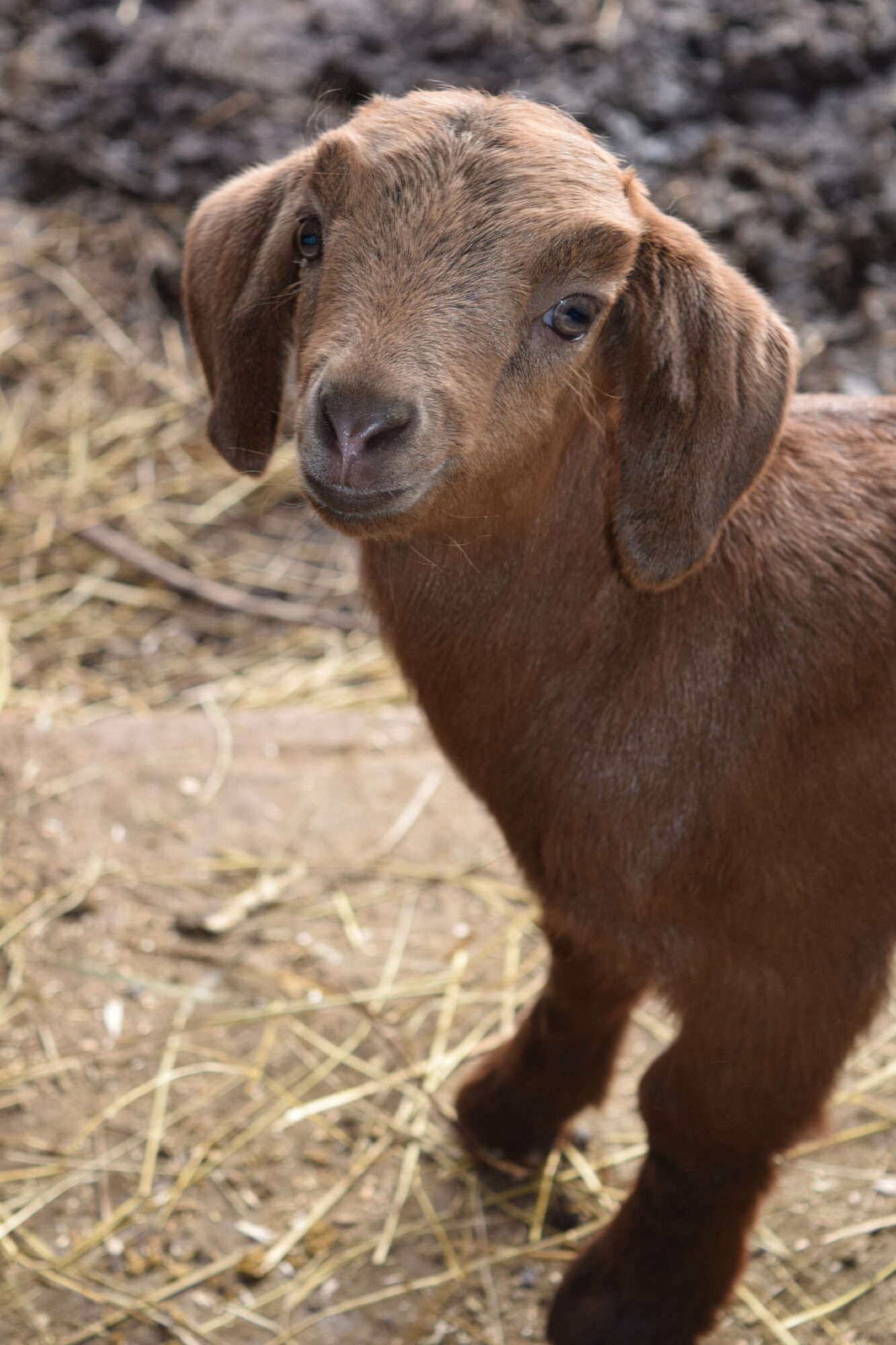We just finished one of the biggest, smelliest jobs of all on our farm—cleaning out the barn. And I’m so glad it’s done, just in time for baby lambs and kid goats to arrive in a few short weeks!
Many farmers clean their barns every day or every other day. Goats and sheep don’t make much mess, so cleaning can be done less frequently. There are lots of different ways to manage manure in animal housing.
We clean our barn very infrequently. We use what is called a “deep bed pack”, which means we clean the barn only once per year. Bedding is allowed to build up, rather than be removed.
This may sound kind of crazy unless you compare it to a compost pile. You may be familiar with the typical backyard compost pile where you’d throw your grass clippings, kitchen scraps, coffee grounds and fallen leaves. A deep bed pack works much the same way, with plenty of the same advantages.
A compost pile works best when is has two basic ingredients: nitrogen suppliers (green) and carbon suppliers (brown). “Green” ingredients, like grass clippings, typically have a high moisture content. They are loaded with sugars and starches and therefore decompose rather quickly. “Brown” ingredients, like straw or sawdust, have a low moisture content and slow-to-decompose plant components. The magic ratio of brown to green ingredients provides the perfect environment for microbes to thrive, effectively turning your garden waste into nutrient-dense soil.
The deep bed pack in our barn is a little different, of course, but the same concepts apply. The goats and sheep supply the nitrogen (manure) and we supply the carbon (hay, straw, and shavings). As with a well-maintained compost pile, the bedding in the barn heats up a little, providing cozy bedding for the animals and killing off parasites that they may have picked up out in the pastures.
When the animals leave the barn to graze the fields in the springtime, we then have ample time to clean the barn. Unfortunately, this past summer kept us a little too busy, and we didn’t get to the less desirable jobs until later in the season.
Ideally, we would clean the barn in spring, dumping the bedding in a long row along one of our fields to further decompose. Fall is then the perfect time to spread the decomposed bedding, allowing it to feed the hay fields all winter long and improve next year’s hay crop. This is often referred to as a “closed loop”, or the recycling of nutrients and organic material on a single farm. Animals graze pastures or consume hay made from the farm, and their droppings are then used to fertilize those same fields. In theory, preserving the nutrient and carbon levels of our farm’s soils will make our farm more sustainable over the long term.
Our deep bed pack system isn’t perfect, however. As the bedding gets deeper and deeper, there is less and less room in the barn for our skid steer loader, which we use to feed out round bales. Gates get buried and waterers have to be adjusted upward. We even have to duck our heads from time to time, to avoid hitting our heads on the rafters as the bedding fills the space. And unfortunately, we do not have the ability to aerate the bedding, much like a gardener would stir their compost. The result is less decomposition and more fermentation of the bedding, leading to stronger smells and ammonia. We apply barn lime and run the barn fans to lessen the odor, but it is still somewhat noticeable. Deep bed pack systems are much better suited for taller buildings like hoop houses with reinforced walls that can handle 4’ of bedding and cleaning pressure. Our traditional dairy barn, even with its stanchions removed, is less ideal.
It also takes my husband nearly a week to clean the barn out with our skid steer. The deep bed pack was three feet deep in spots, and transferring all of that material out of the barn and to our waiting manure spreader took many, many trips. We have a special bedding grabber attachment that makes quicker work of the job, but it is still painstaking. Some spots can only be accessed and cleaned by hand.
Once the entire barn was cleaned out, and the floor scraped and allowed to dry, we spread lime and shavings. We busted up a few dozen “junk” bales to give the animals a nice, cozy place to bed down. It was like heaven in there! I don’t know who was happier, the goats or me, but we all feel much better about bringing babies into this freshly cleaned barn.
